Potato Farls (Irish Potato Cakes)
Potato Farls, sometimes called Irish potato cakes or potato bread, are really easy to make. Containing just seasoned mashed potato, butter and flour, they’re surprisingly tasty too. Fantastic with a dab of butter and softly poached eggs, or include in a big breakfast with sausages, bacon, black pudding, tomatoes etc. You can even have them with sweet toppings like jam and maple syrup.
Disclosure: this post may contain affiliate links. If you buy via my links, I may earn a small commission at no extra cost to you.
Jump to Recipe
POTATO FARLS
Any purists glancing through this post may have already spotted that some of my Potato Farls are not, strictly speaking, farls at all. That’s because the world farl comes from the Gaelic for quarter or fourth, and Irish potato cakes are usually made by cutting a circle of dough into quarters before griddling or frying.
However, I often prefer to make one big circle and cut into eighths. But, whether you divide the dough in half to make two circles and cut each into quarters, or do one big circle, getting soft-on-the-inside, golden-on-the-outside farls is still beautifully simple.
I’ve seen all sorts of combinations of ingredients for these potato cakes. Some include eggs, others have heaps of flour.
After some experimentation though, I’ve found the best Potato Farls are simply mashed potatoes with plenty of seasoning, some butter, and a small amount of flour.
THE POTATOES
Many people consider potato cakes to be a splendid way of using up leftover mashed potato. However, being in a greedy household, the concept of ‘leftover’ mashed potato is one we struggle with.
Besides, if you like a really creamy or buttery mash, then you might find that you’d have to add a lot of flour to get your Potato Farls to hold together. The result will be unpleasantly gluey. I’ve sometimes boiled extra potatoes at dinner time, keeping them aside for the next day’s farls.
But I think that potato cakes are so good, and relatively quick anyway, it’s worth cooking up a batch of potatoes specially for them.
I use 350 grams of mashed potato to make eight farls. So, if you’re starting off with raw, unpeeled potato, you’ll need 380-400 grams. As with any mash, floury potatoes (e.g. Maris Piper) are better than waxy ones.
You can learn about floury vs waxy potato varieties here.
After cooking, weigh to check you have around 350 grams: a little under or over won’t matter.
EASY POTATO FARLS
I’m sure you know how to boil, drain and mash potatoes. But, just in case, I’ve included full instructions in the recipe card at the end of the post 😁.
The main point to note is that the potatoes should be as dry as possible before mashing. I do this, after draining, by leaving the cooked potatoes in the sieve or colander for five minutes. This allows any clinging water to evaporate.
All you do then is add some pepper (I prefer white pepper here), a bit more salt if needed, and mash with butter. If you’re using cold cooked potatoes then melt the butter first so you can incorporate it better.
Next, stir in the flour to create a soft dough. For 350 grams of mashed potato I use 50 grams of plain flour.
On a floured surface, roll or pat out the dough into one or two circles. I like my Potato Farls relatively thin, so make the circle(s) not much more than half a centimetre thick.
Go thicker if you want, but I recommend no more than a centimetre.
Then simply cut each circle into quarters or eighths and you’re ready to cook.
COOKING POTATO FARLS
The potato cakes are cooked in an ungreased, non-stick frying pan or on a griddle. Some people fry them in fat, but I think that’s unnecessary. I cook mine on this electric table top grill (paid link).
I became a huge fan of these when I started using one for Sourdough Pancakes. As well as cooking very evenly and having good temperature control, the good size means I can cook eight farls in one go.
If your pan or griddle isn’t big enough to do this, then cook the potato cakes in batches. Keep cooked ones warm in a low oven while you finish the rest.
They’ll only need 3 to 5 minutes per side, on medium heat, to become cooked through and browned. The farls will also puff up a bit when done.
SERVING POTATO FARLS
Traditionally, Potato Farls are served as part of a hearty Irish breakfast or, north of the border, an ‘Ulster fry’. Over in Scotland they’re known as potato (or ‘tattie’) scones and are eaten in the same way.
A great change from toast or fried bread, I think potato cakes go really well with sausages, bacon, black pudding and the whole big breakfast experience.
The farls reheat well, so you can make them the day (or a couple of days) before and, in the morning, just put in the pan or on the griddle until warmed through. I’ve found they reheat successfully in a toaster too. Or you could put them in a low oven.
If you fancy something lighter, then farls are lovely simply topped with runny fried or poached eggs. Include a pat of butter to melt on top plus a few chives and they’re even better.
Although I haven’t tried it yet, I imagine smoked salmon and soured cream on farls would be great for a special occasion breakfast. Think of it as an easier blini!
If you want to go in the other direction, that of simplicity, then forget everything but the butter.
For a sweet farl, top the butter with a drizzle of maple syrup or a blob of jam.
Don’t worry that you’ll notice the pepper in the dough. I can confirm that once your sweet topping is on (like my homemade strawberry jam above) they’re good enough to eat as a dessert.
I hope you’ll give my Potato Farls or Irish potato cakes a try.
Simple, satisfying and incredibly versatile, you might just wonder why you haven’t been making them for years.
HAVE YOU MADE POTATO FARLS?
LEAVE A COMMENT AND DON’T FORGET TO RATE THE RECIPE!
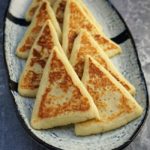
Potato Farls (Irish Potato Cakes)
Potato Farls, or Irish Potato Cakes, are easy to make & great for breakfast or as a snack.
Serve as part of a cooked breakfast with eggs, bacon etc. or even with sweet toppings like jam.
Ingredients
- 375-400 g floury potatoes e.g. Maris Piper see Recipe Notes to use leftover boiled or mashed potatoes
- salt
- pepper white or black
- 30 g butter
- 50 g plain flour plus extra for dusting
Instructions
-
Peel the potatoes, cut into 2cm chunks and place in a saucepan.
Cover with cold water and season with salt.
Bring to a boil, then simmer until tender (12-15 min).
-
Drain the potatoes in a sieve or colander.
Rest the sieve or colander on the now empty saucepan and leave the potatoes to dry and cool for 5 minutes.
-
Tip out any water that's collected in the saucepan and return the potatoes to the pan.
Add some pepper, the butter, and mash until smooth.
Taste and add a little more seasoning if needed.
-
Mix in the flour to give a soft dough.
Sprinkle a board or work surface with a little more flour, then roll or pat out the dough into one or two circles, each ½ - 1 cm thick.
If you've made one circle, cut into 8 triangles. If you've made two circles, cut each into 4 quarters.
-
Heat a non-stick griddle or frying pan to medium, then transfer as many potato farls as will fit in without crowding them.
Cook the farls in batches if necessary, transferring them to a preheated baking tray in a low oven while you cook the rest.
-
Cook until brown on both sides and heated all the way through.
This should take 3-5 minutes per side: potato farls will puff up a little when done.
-
Serve with eggs, bacon, sausages etc., buttered if liked, or with sweet toppings such as maple syrup or jam.
Can be stored for 2-3 days. Reheat on a griddle, in a pan, toaster, or a low oven.
Recipe Notes
If you wish to use leftover cold potatoes to make farls, melt the butter so it can be incorporated more easily when mashing.
You can use leftover mashed potato, so long as it isn't very buttery or creamy as this would prevent the farls holding together without adding lots of flour, resulting in an unpleasantly gluey texture.
RELATED RECIPES


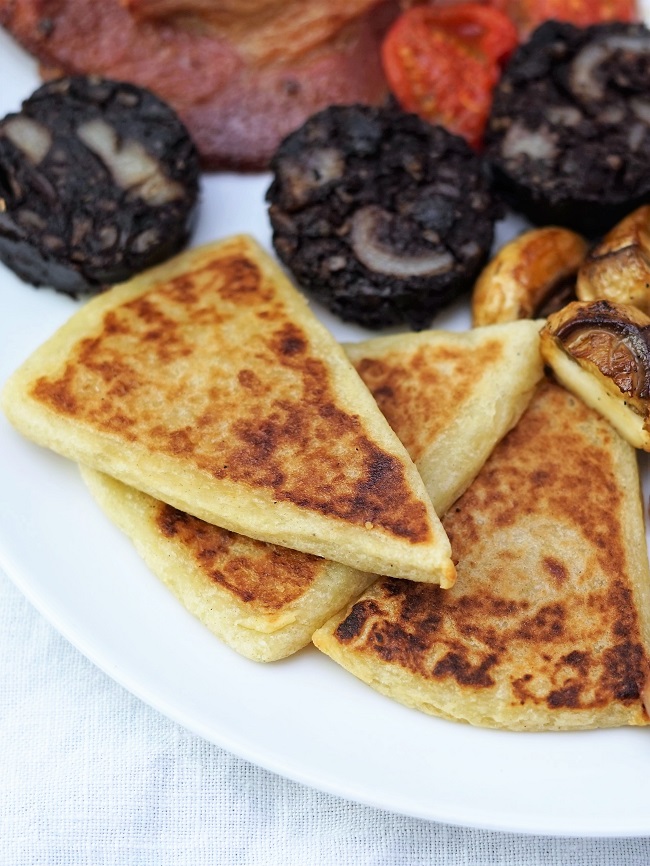
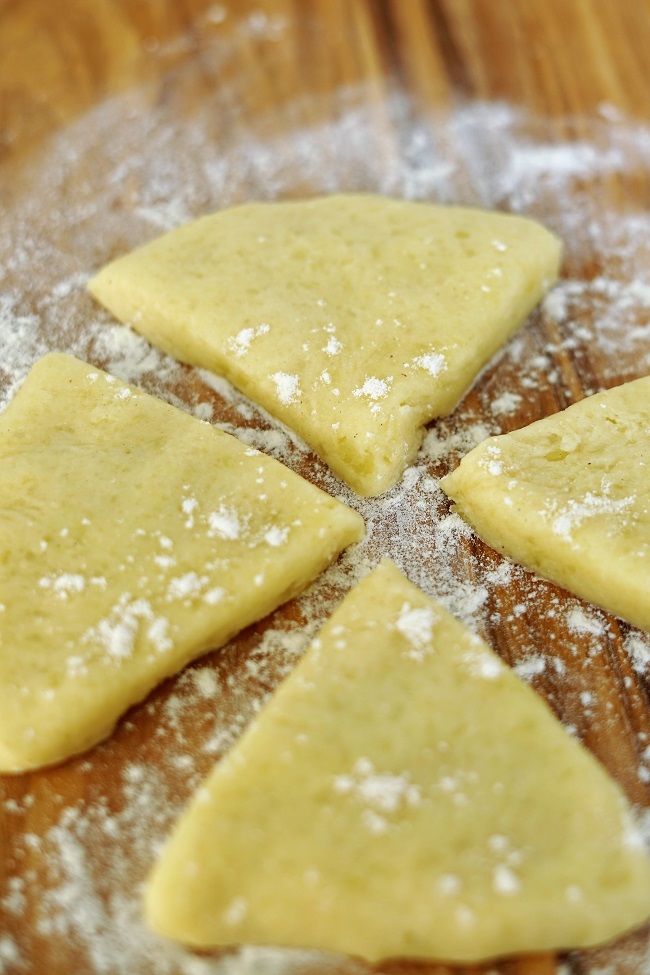
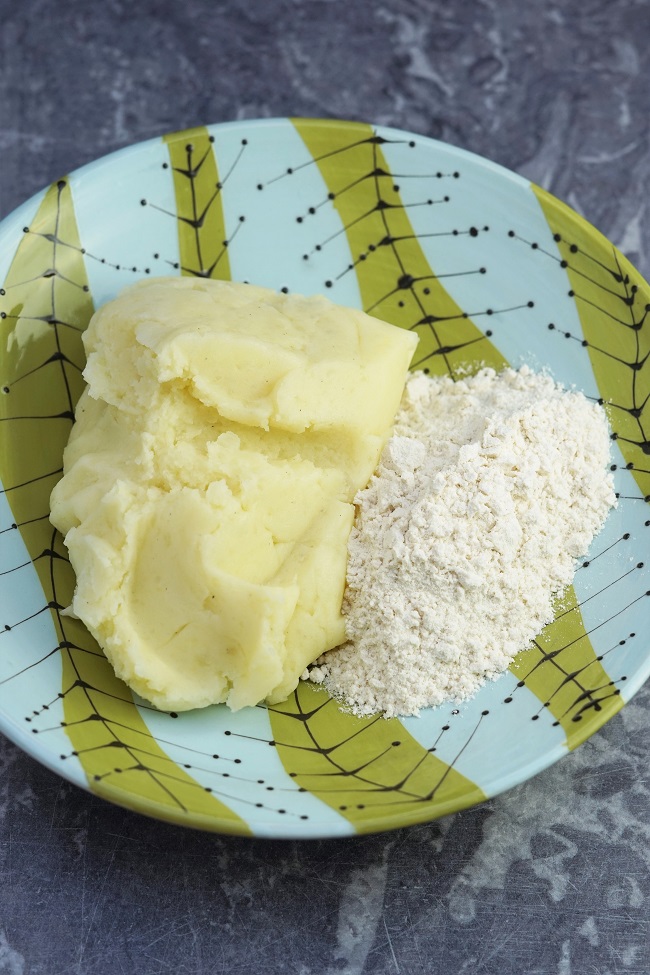
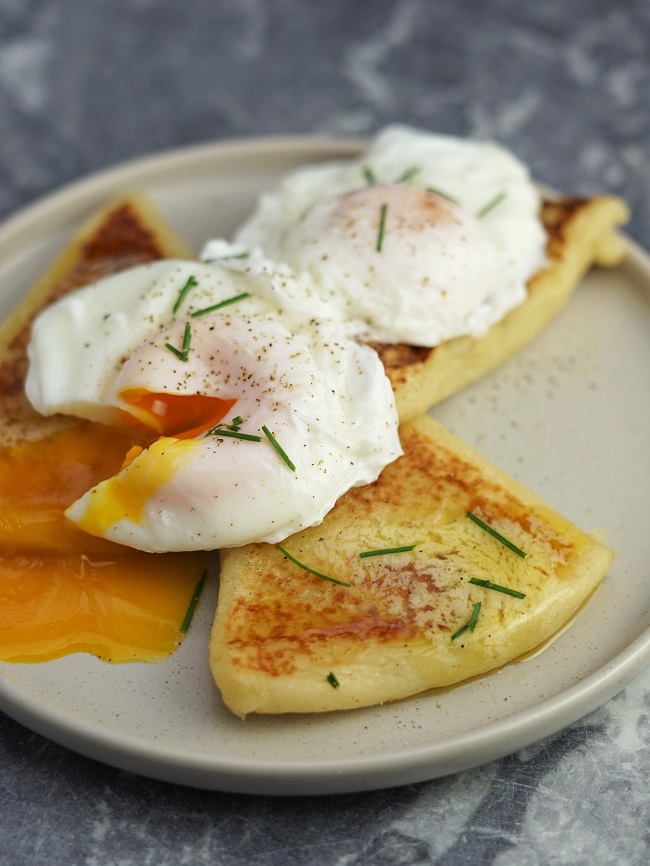
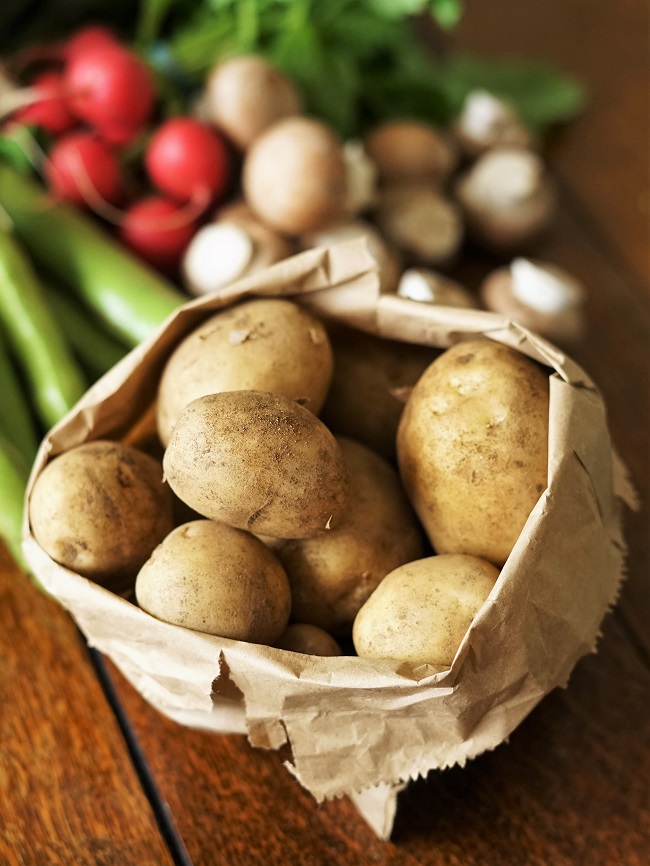
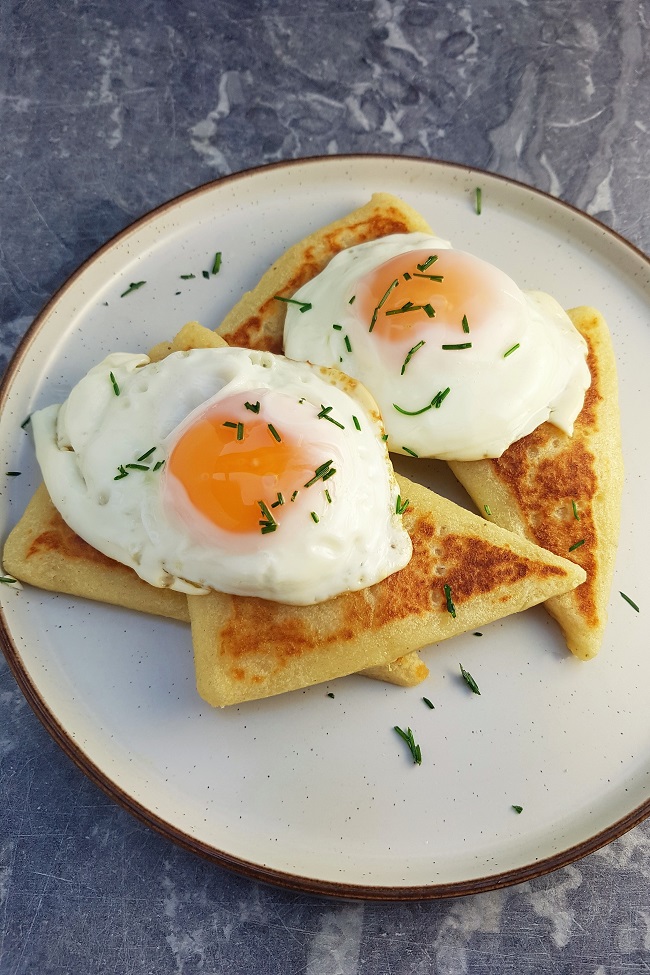
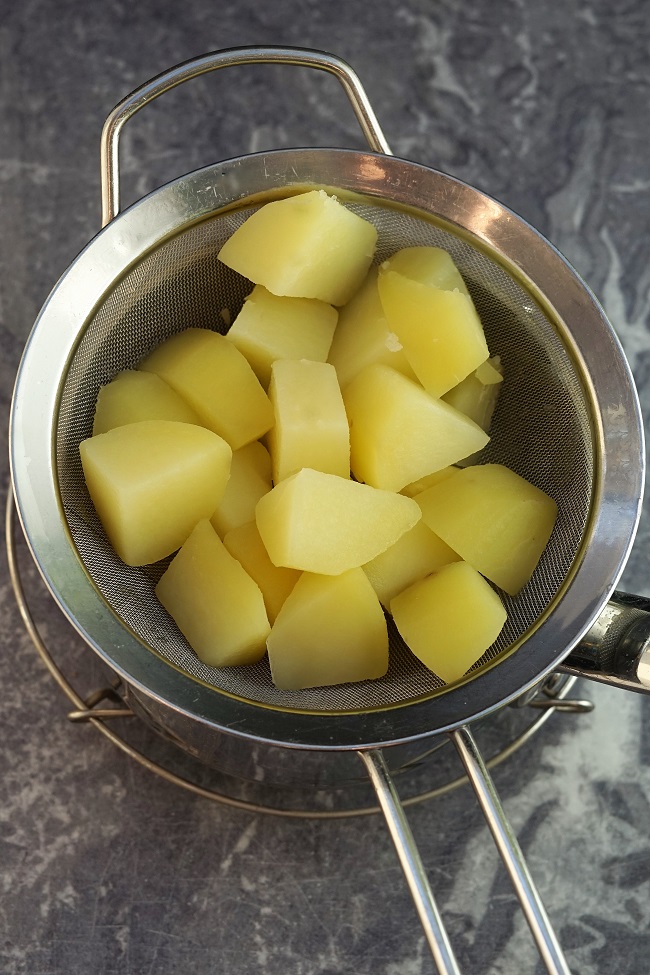
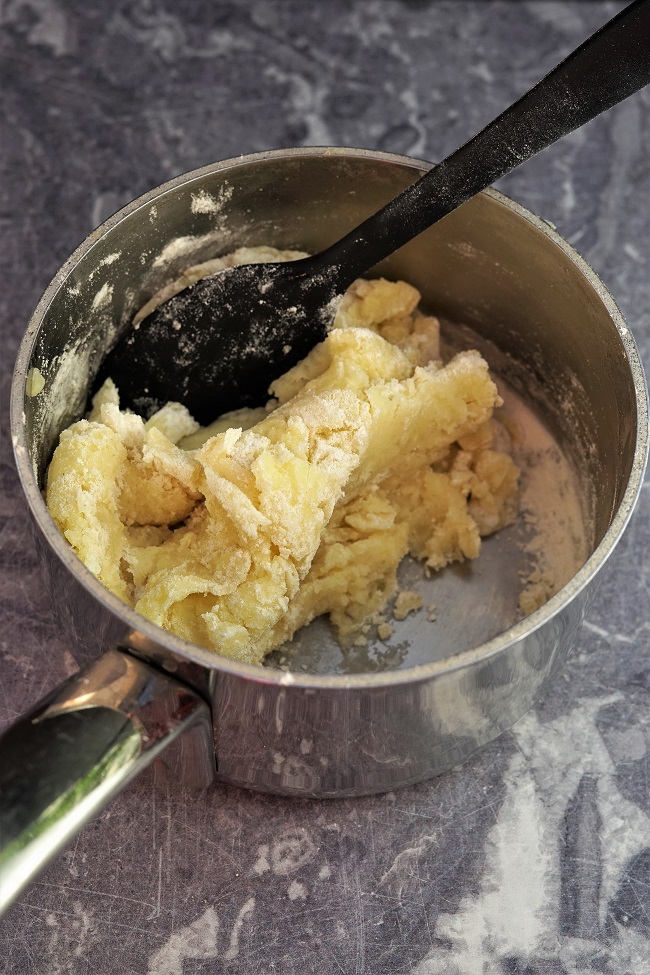
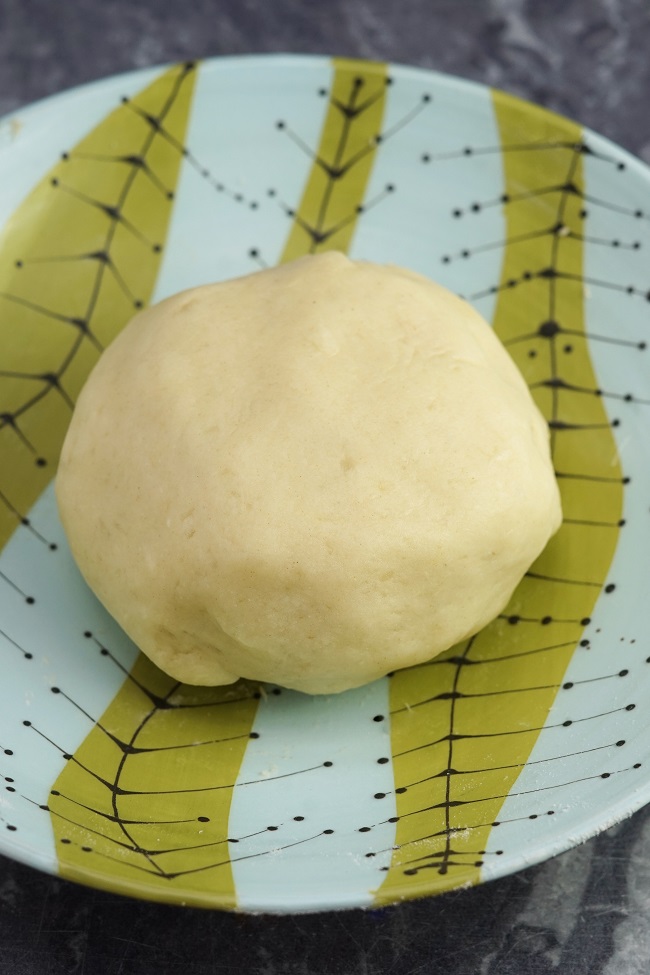
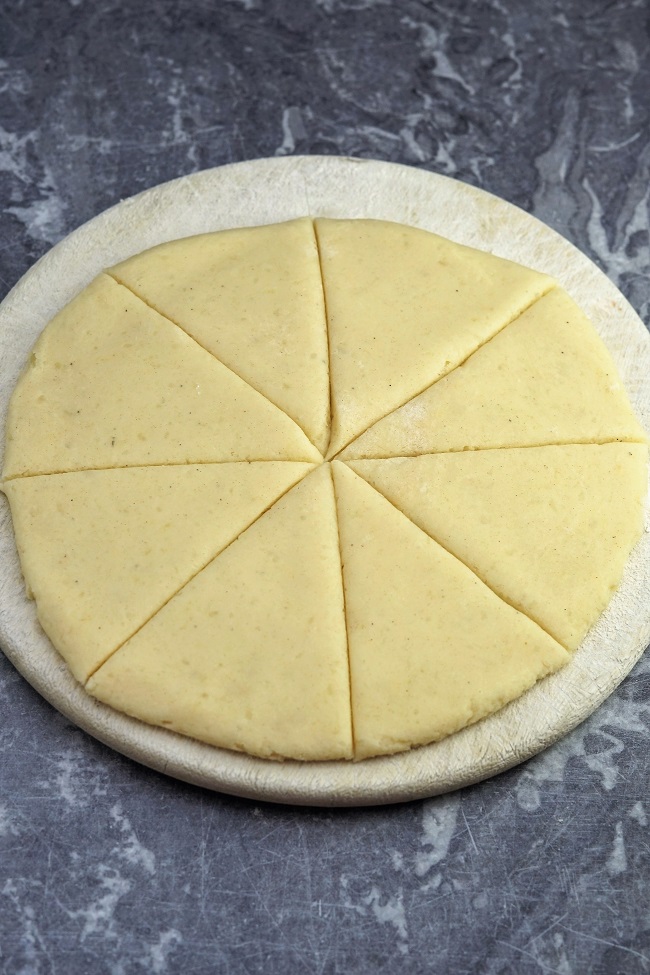
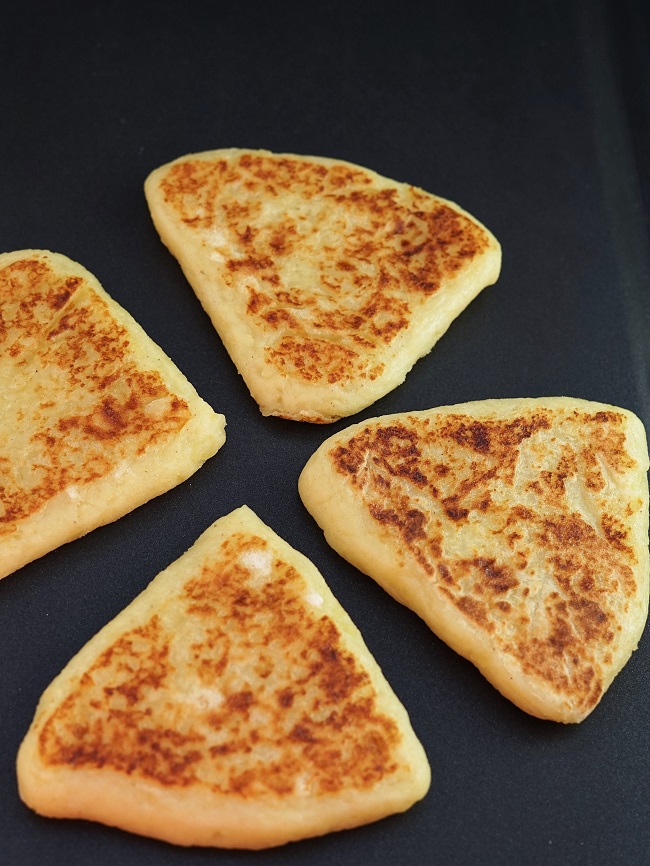
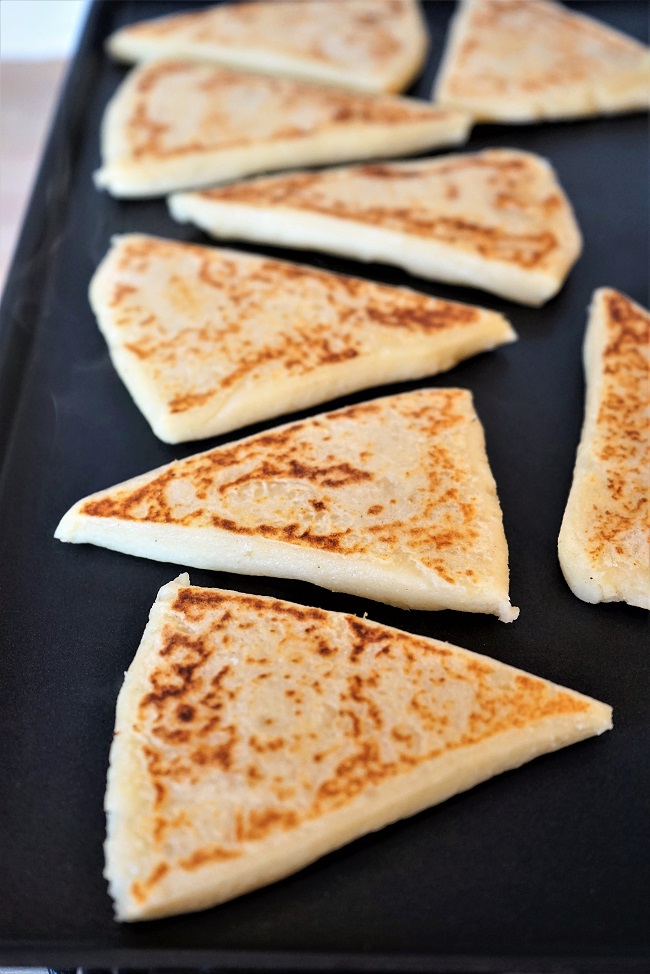

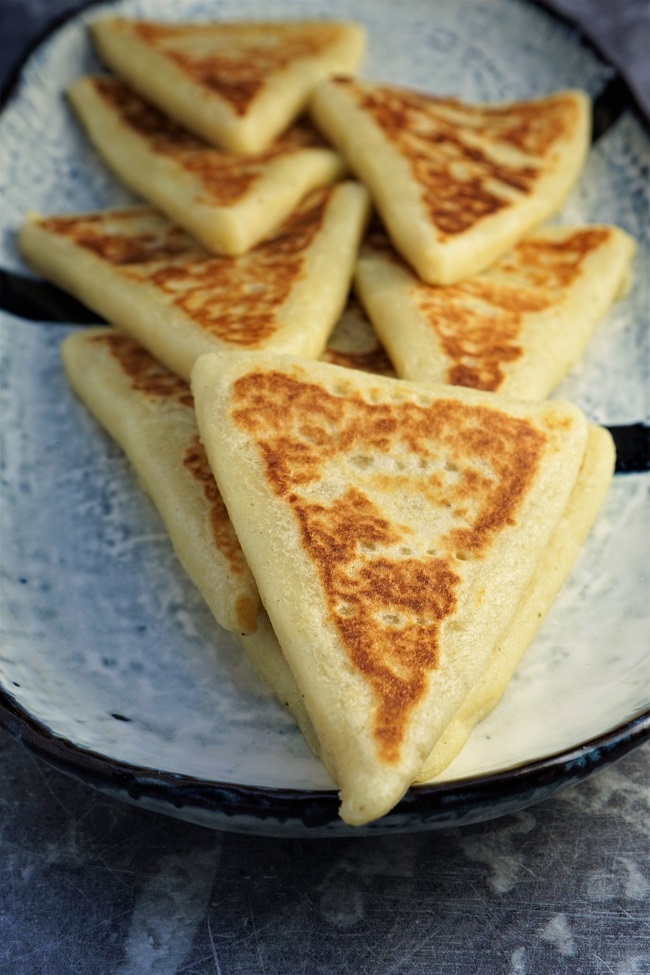
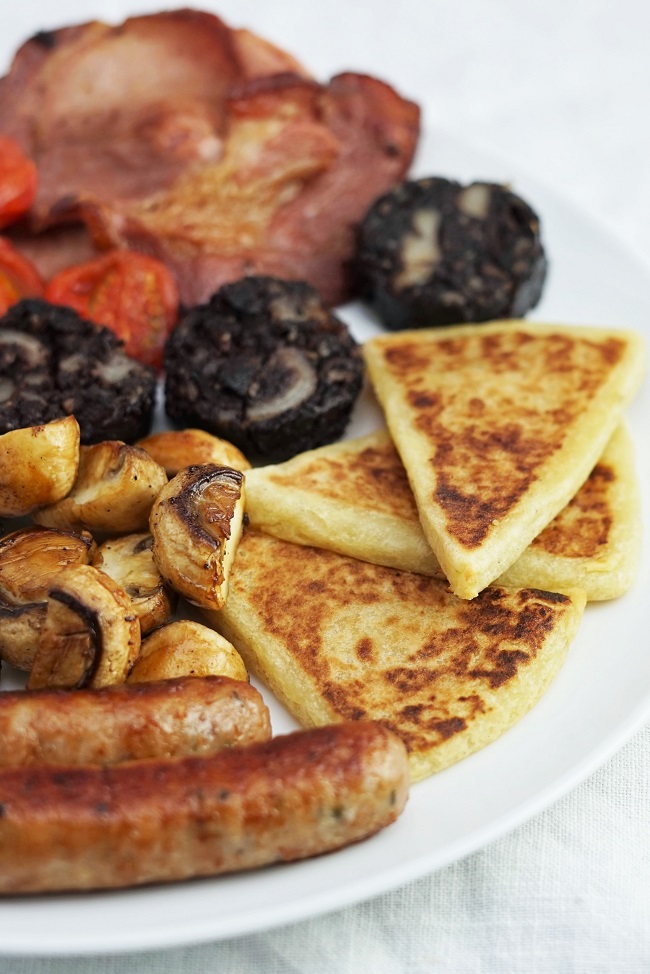

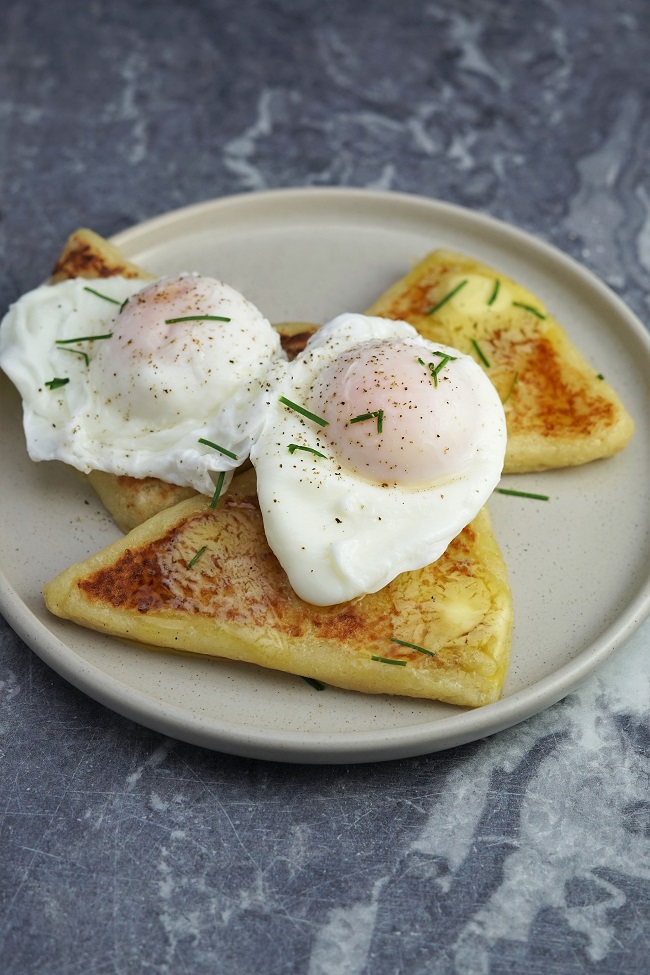
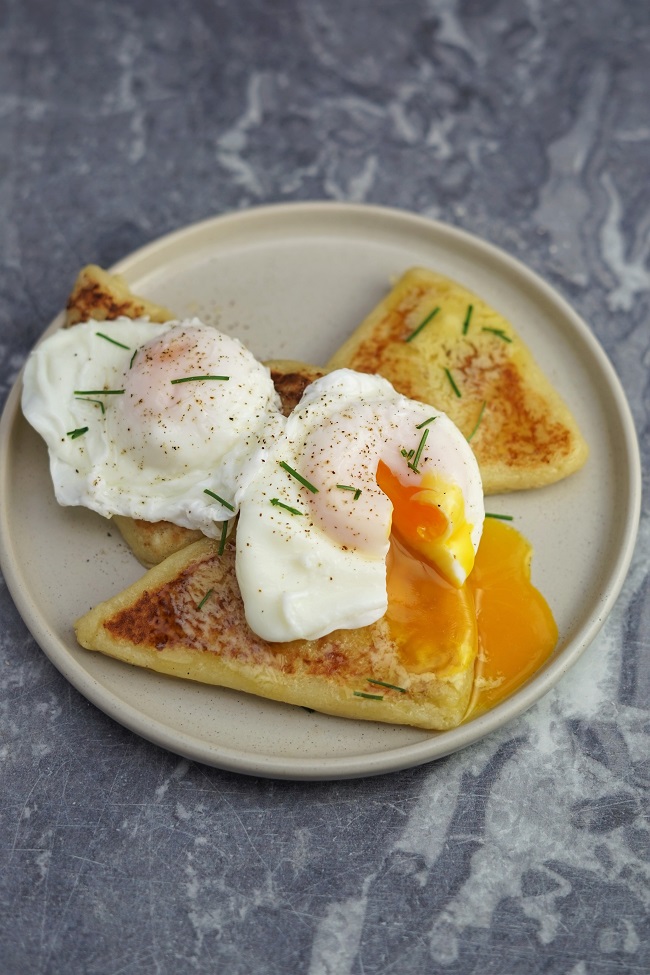
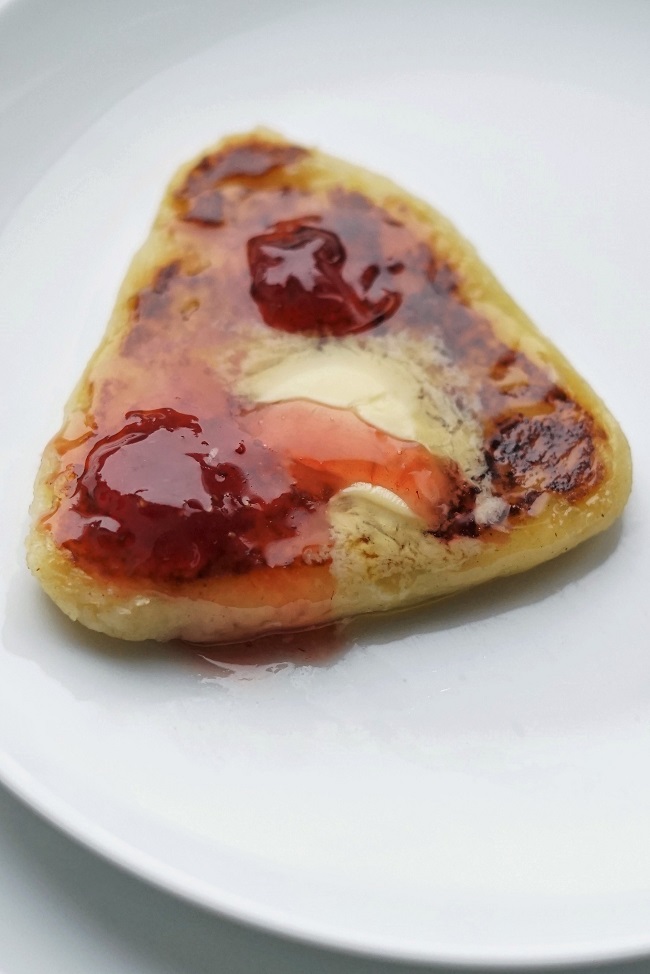

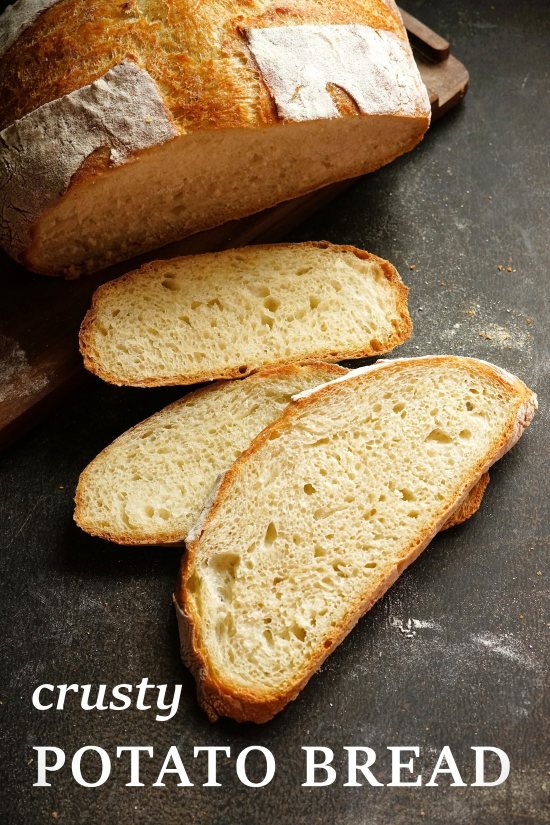
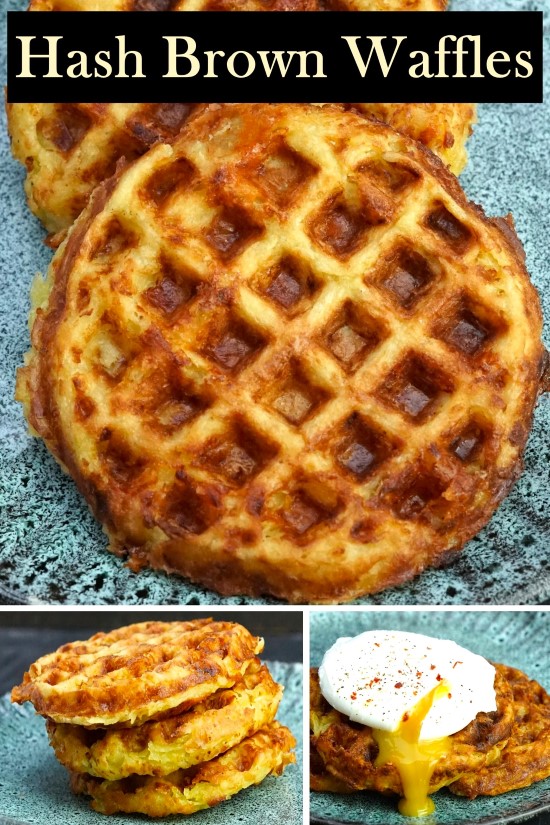
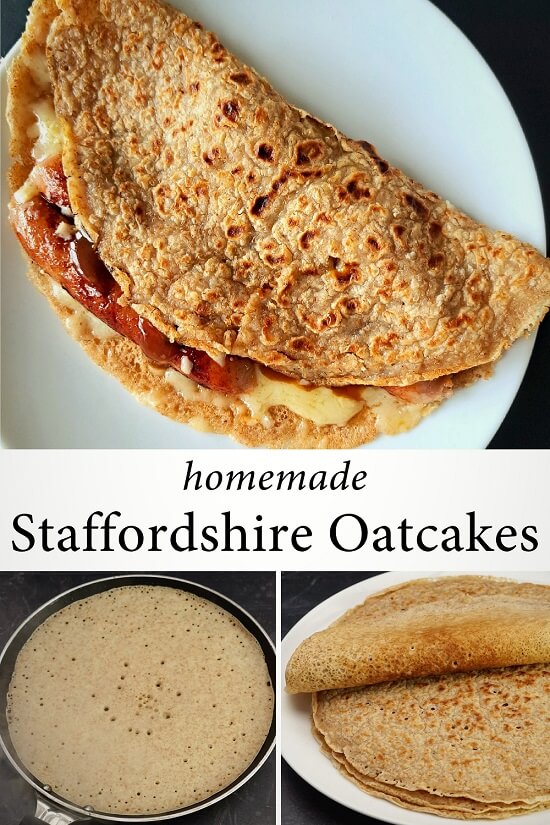
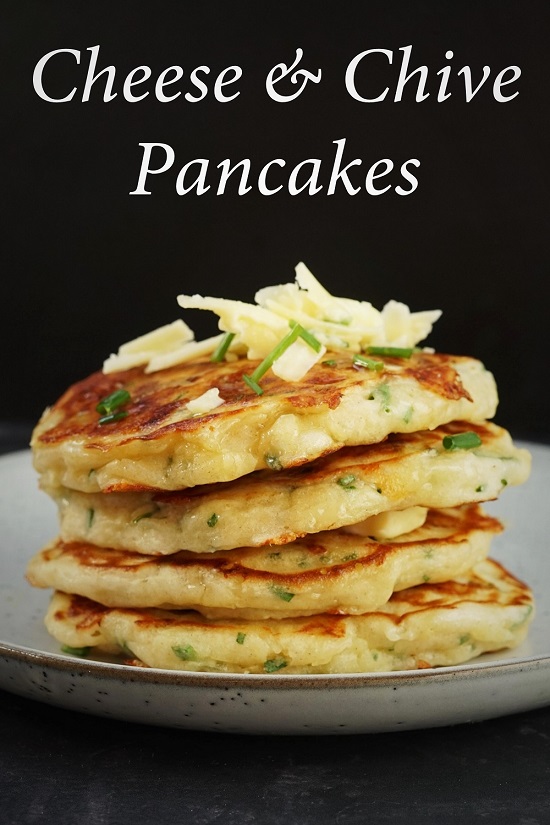
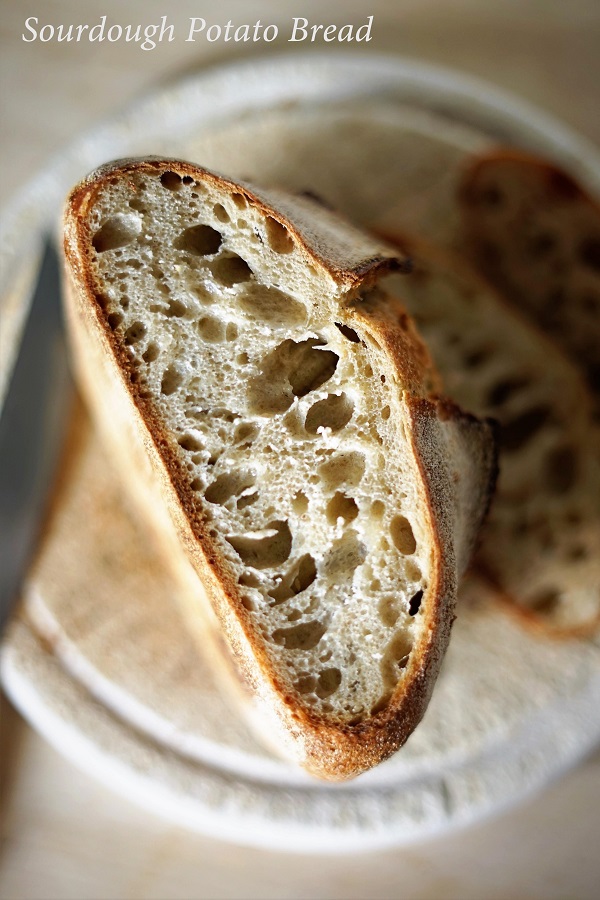

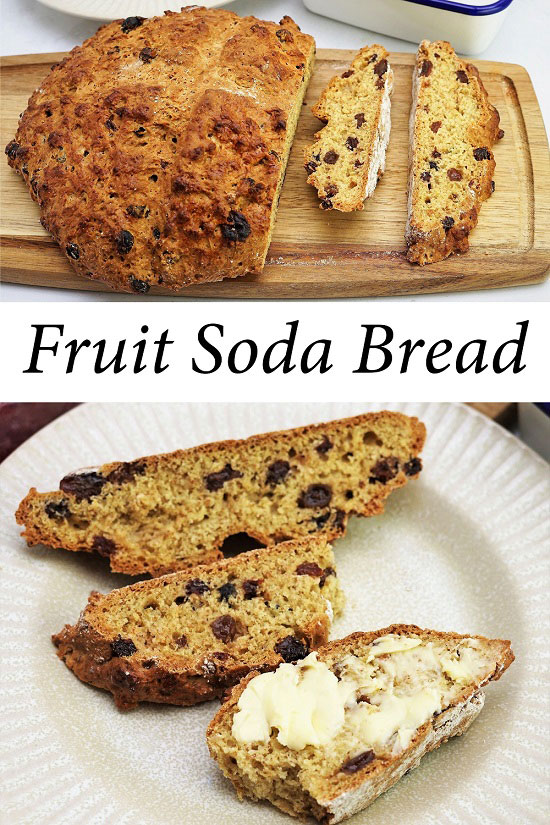
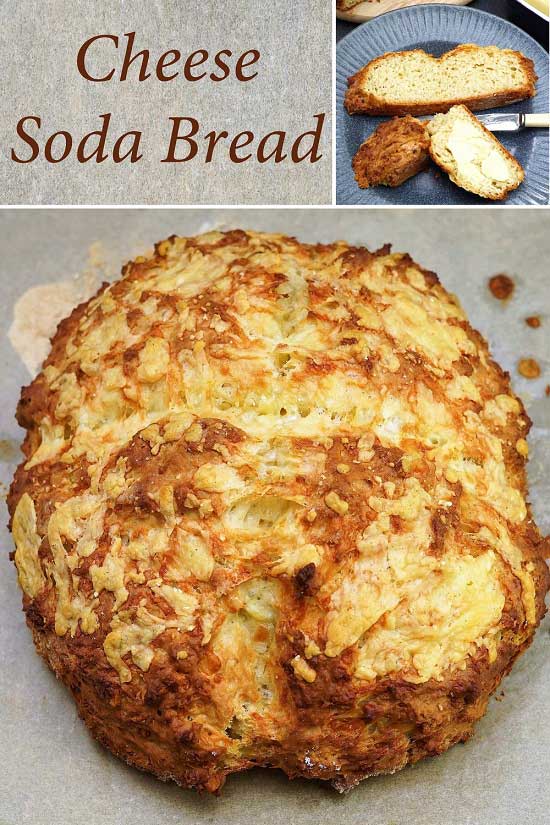
My mother made these all the time. They were always eaten voraciously and enjoyed immensely especially when they were part of a beautiful Irish breakfast. But those days are long gone,, my mother died about 30 years ago and I’ve been living in Canada for more than that. But it never ceases to amaze me that these recipes are still shown on north American recipe and I’m still grateful that they are because I mean to make them one day.
I was only looking out of curiosity really, as I have been making potato cakes for years, and actually made a batch last night, and I am astonished at the number of weird and wonderful recipes out there online containing all manner of spurious ingredients (so many with eggs and even milk in them for goodness sake!) I’m delighted to see someone doing it right, with just potatoes, flour, a touch of butter and some salt and pepper.
I make mine in circles marked out into quarters and cook in a round cast iron skillet.
They freeze really well and can be reheated quickly in the toaster, under the grill, or even in the air fryer, so I tend to make a big batch when I find some time on my hands or have a surfeit of awkwardly shaped potatoes..
Thank you, Nigel. Good to get such praise from an old hand at making potato cakes!
‘Potato cakes’ were one of my Welsh mother’s comfort food goodie…guaranteed cure for the Winter blues. She made them pretty thin, then cooked them on a dry griddle sprinkled with a little salt (a heavy circle of iron almost half an inch thick). When ready they were sliced through the middle and reassembled, sandwiched liberally with cold butter and sprinkled with salt. A tea towel tucked into the collar was the required dress when eating them as the butter leaked as it melted.
I hate to admit that I have made potato cakes using (dare I say it? 0 Instant mash! Using slightly less liquid than advised on the packet to get a drier mash…it worked, with the addition if butter, salt and pepper, and on one occasion finely chopped spring onions. I do usually make my own mash with steamed potatoes…I’m not a total Philistine!…but the cheats version works and might be useful for camping cooks.
A tea towel in the collar to catch the drips of melted butter… 😋😋
“Some people fry them in fat, but I think that’s unnecessary.” This is the main place I parted ways. Most recipes call for frying in butter and that’s how I’ve had them. On a dry non-stick cooking surface, I get a naan-like pattern of blackened spots in a network of white, unbrowned dough exactly where the farl contacts the surface, without any fat to distribute the heat evenly. Great for naan not so great for farls. Frying in butter improves the appearance, texture and flavor. I’m not making these for my health. 🙂
Yes, I can certainly see the attraction of frying them in butter! I will almost always eat them with some sort of fatty food or top with a pat of butter 😋.
Just made these for my mashed potato hating son. He absolutely loved them. So simple, although I didn’t tell him that! Thank you for the recipe
Ha ha! How sneaky of you! 😄. Glad they were enjoyed.
I rated 5 star –
Because I know if I make them right they will be tasty as –
I love these haven’t had them in centuries:
Once you eaten them – you never forget how tasty they are ,
Thanks for the recipe – exactly what I was looking for .
How about
Good old English
Folly Polly recipe : Sweet one
I’ve just made these and they’re delicious and without the gloopy feel I usually end up with – thank you for all the hints and tips, as well as the recipe!
Thank you, Frances! Gloopy potato cakes are such a let-down, so I’m pleased you found my version delicious 😊
Perfect potato cakes! Advice to first timers – use floury potatoes. Any old potato won’t do. Only add the amount of butter in the recipe and less if you’ve used left over mashed potato. Dry fry in a non-stick pan, slowly so they cook all the way through without burning. Once cooked you can now slather on as much butter as you like! I’m keeping mine in the fridge to take to the Forest tomorrow and heat up on an iron griddle over the camp fire. What a feast it will be. 😋
Thank you for your lovely feedback and excellent tips, Carolyn! Eating these over a camp fire sounds wonderful!
I have just tried the recipe and I’m not impressed. They’re not like any potato cakes/farls that I’ve tasted. They are better if there is no butter added when mashing the potatoes and quite a lot more flour is required. The recipe gives a dough that is too soft and sticky so difficult to cook and a bit “mushy” when eaten.
Sorry to hear that Joe. From previous comments, others who’ve made the recipe have enjoyed them (and even compared them favourably to their grandmothers’).
But each to their own, I guess.
Can you freeze them once made? They look just like mammy used make x
Although I haven’t tried it, I can’t see any reason why you can’t freeze the farls. Hope you enjoy them!
These are very good indeed not as good as my grannies but very good indeed
‘Very good indeed’ is praise enough for me, even if your grannies’ are better, so thank you!
I’m going to give you a five based on the convincing description and excellent photos. I will have a crack at the farls today and report back ASAP.
I was brought up in Ireland eating potato farls (where they’re very popular) from home bakeries and my granny’s kitchen and your methods seem consistent with their approach.
One last observation – my son has started an etymological debate with me about the origin of the word farl – it was what we always knew these as in Ireland however he has pointed out that it’s from the Old English for quarter. Other contributions to that debate welcome!
Very good site – thank you
Ah yes! I’ve just seen that farl is related to Old English (also the Middle English ferdell) but I guess it’s understandable that such closely related countries might have similar words for things.
Hope you enjoy them!
WHY? WHY? WHY? Do all recipes for mash potatoes, potato cakes, roast potatoes etc ask one to boil the potatoes in plenty of water and then drain off the water?
Aren’t the valuable nutrients drained off too? Why ever not boil potatoes in their skins and peel after boiling? This helps to retain the minerals and nutrients. Ask any sensible nutritionist or just use your own common sense. B and C vitamins are water soluble so all vegetables need thorough washing before peeling and cutting. This has been driving me crazy for ages.
If someone’s diet is so deficient in vitamins that those found in potato cooking water are going to make all the difference, I’d suggest they seriously need to reassess their diet 😀.
Thank you for the 4-star rating anyway, despite me peeling the potatoes!
I made these after trying several different recipes, including my grandmother’s. These simple ingredients worked so much better and resulted in nice fluffy, light cakes where others were heavy and overly seasoned.
I do boil the taters in the skin, but that’s because I think it’s easier to peel the skin off after boiling and you loose less of the potato. To each his own. I’m sure the nutrient difference is negligible.
Happy to give you 5 stars, and by goodness, don’t tell my grandma that your’s are better or she’ll be rolling in the grave.
Thank you for your lovely feedback, Amanda!
Very honoured that my recipe is your favourite from those you’ve tried – even your grandmother’s 😊.
I agree that boiling the potatoes in the skins is a personal choice, although probaby best done for the reason you did rather than for any small nutritional benefit.
Thanks again for taking the time to give your feedback!
I always boil my potatoes without peeling until cooked – much nicer xxx